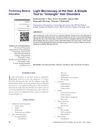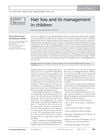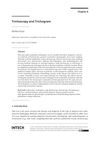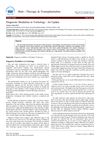Microscopy of the Hair and Trichogram
March 2014
in “
Turkderm
”
hair microscopy trichogram light microscopy polarized microscopy scanning electron microscopy hair shaft abnormalities hair infections hair infestations hair cycle stages non-scarring alopecia scarring alopecia hair shaft disorders Graham-Little-Piccardi-Lassueur Syndrome dermoscopy hair analysis hair plucking SEM hair diseases hair loss stages non-scarring hair loss scarring hair loss hair disorders GLPL Syndrome skin surface microscopy
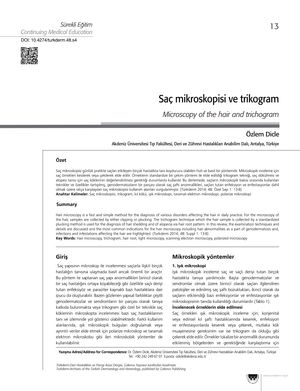
TLDR Hair microscopy is a useful and affordable way to diagnose hair disorders.
The 2014 document reviews hair microscopy, including the trichogram technique, as a diagnostic method for hair disorders. Microscopy, using light, polarized, and scanning electron methods, helps identify hair shaft abnormalities, infections, and infestations. The trichogram involves plucking at least 50 hairs and examining the roots to diagnose and monitor hair diseases by determining the hair cycle stages and identifying non-scarring versus scarring alopecia and hair shaft disorders. Despite being less common due to non-invasive techniques like dermoscopy, it remains valuable for diagnosing conditions like Graham-Little-Piccardi-Lassueur Syndrome. The document concludes that hair microscopy is a cost-effective and useful diagnostic tool when samples are properly collected and analyzed.
